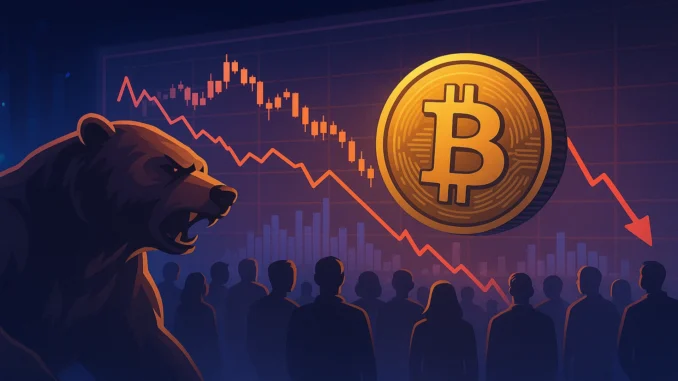
Why This Bitcoin Cycle Is Different
Bitcoin has weathered many downturns since its inception in 2009, each time rebounding to new highs. However, according to Dan Ashmore, Head of Research at Invezz, investors should resist assuming history will repeat itself.
In his latest analysis, Ashmore cautions that while Bitcoin has bounced back before, its current environment is fundamentally different. The cryptocurrency is now operating in a world where stock markets, for the first time in its history, are in a sustained decline amid high inflation and rising interest rates.
Bitcoin’s Past Was Built on a Decade of Growth
Since Bitcoin’s launch in 2009, global financial markets have enjoyed one of the longest and most powerful bull runs in modern history. The S&P 500 rose from 676 to 4,793, and the Nasdaq from 1,268 to 16,057 — a period fueled by near-zero interest rates and massive liquidity injections from central banks.
Throughout this era of cheap money, every major Bitcoin correction occurred against a backdrop of surging traditional markets. Until 2022, Bitcoin had never existed in a sustained bear market environment.
A New Era of Economic Conditions
That changed in 2022, when inflation soared and central banks responded with aggressive rate hikes. The S&P 500 fell nearly 20%, while the Nasdaq lost more than a third of its value — marking Bitcoin’s first experience trading through a true global downturn.
“Every single dip in Bitcoin’s history took place while the wider financial markets were humming along swimmingly,” Ashmore explained. “This time, they’re not.”
Bitcoin’s price, though up about 75% in the past six months, remains roughly 60% below its late-2021 all-time high. For many investors who entered the market in recent years, positions are still deeply underwater.
Limited History, High Volatility
Ashmore also emphasized Bitcoin’s short trading history and limited liquidity in its early years. While the asset’s total lifespan spans 14 years, genuine market depth and institutional participation have existed for less than half that time.
This, he argued, makes it statistically unsound to assume past patterns will persist. “We have such a small sample size to work with when it comes to Bitcoin,” he noted. “It is important to be cognizant of that when assessing how it trades.”
Not Doom — But Realism
Ashmore’s message is not bearish but measured. He does not dismiss Bitcoin’s potential to rise again but urges investors to contextualize its history.
Bitcoin has never faced sustained inflation, tightening monetary policy, or a prolonged global slowdown — factors that are now defining its market environment.
Blindly assuming another explosive rally because “it always comes back” could lead to false expectations. As Ashmore concludes, “Bitcoin has never experienced a bear market in the wider economy before. Until now.”
The key takeaway: Bitcoin’s future still holds promise, but this is uncharted territory — and it demands a more cautious, data-driven perspective than ever before.


